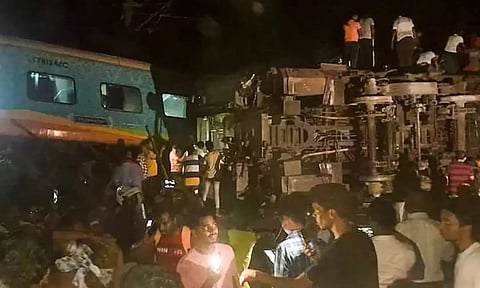

CHENNAI: The disastrous Balasore train accident could have been prevented only if the railway ministry had not thrown safety to the wind and implemented safety projects in true letter and spirit.
At least three different safety mechanisms have been experimented with during the last decade and a half by Indian Railways, but none was put to effect on a regular scale.
The first of the safety mechanisms, Train Protection Warning System (TPWS) was conceived in 2008 and was tried a few years later between 2012 and 2014 in Southern Railway in Chennai – Gummidipoondi suburban section on a trial basis. The signal-based TPWS, which allows the engine to automatically apply the brakes when the loco pilots do not adhere to the over-speed warning or signal jumping, was understood to have been ‘shelved’ based on the recommendation of the high-level safety review committee led by Anil Khakodkar. The committee suggested an anti-collision system instead of the TPWS.
P S Suriyaprakasam, national joint-general secretary of NFIR, told DT Next that they had tried an Auxiliary Warning System, which would be fitted ahead of signals to warn of collision, also on the Chennai – Gummidipoondi section, but did not take off.
“Chennai-Gummidipoondi section has reached a saturation point (140%). We insisted that TPWS must be used. The government is pumping a ton of money into building cosy air-conditioned interiors and malls in the name of station redevelopment. Had they shown the same interest in addressing the safety concerns, such accidents could have been avoided. Where is the white paper on the implementation of train safety systems?” he asked.
Judicial inquiry must be done: ALRSA
Interestingly, the much-hyped indigenously developed Kavach (anti-collision system) was also tried on a pilot basis at Arakkonam in Chennai Railway Division. However, it has not taken off so far on a larger scale in SR. Meanwhile, loco pilots are faulting the management for only trying to fix accountability instead of fixing the problem.
“It is easy to blame the loco pilot of the Yeshwantpur-Howrah superfast express train no 12864 for not stopping ahead of the accident site? The signal was green for him. Officials might argue why he did not spot the derailed coaches obstructing the down line he was in from a kilometre away. The accident happened around 7 pm. Would the lighting be proper? Unlike the justification of the officers, we loco pilots know that the headlight of the train is not bright enough to spot an obstruction one kilometre away, even on a straight line, “ said a serving loco pilot of an express train on condition of anonymity.